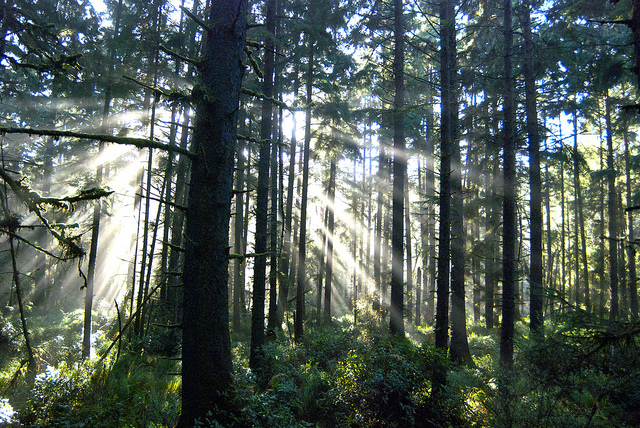Have you ever driven through the forests of British Columbia and seen areas with brown-needled evergreen trees?
These trees are victimized by a parasitic insect, the white pine weevil. The female white pine weevil feeds on the stems of these host evergreens and deposit their eggs in the apical shoot, the end of the tree farthest from the attachment. The larvae will hatch and grow into mature white pine weevils while the apical shoot completes its growth for the year. As the next generation of white pine weevils exit the tree they feed on the xylem, the tree’s nutrient system which turns the needles of the tree brown and eventually kills the tree.
Here is a podcast that further discusses the white pine weevil and provides insight on identifying trees that are damaged.
Dr. Justin Whitehill, a researcher at the Michael Smith Labs at the University of British Columbia, studies Sitka spruce trees that are resistant and susceptible to white pine weevils hoping to find a variety that can be used successfully in reforestation efforts.
The difference between resistant and susceptible genotypes is that they contain a different quantity and arrangement of stone cells. Stone cells are rigid cells that provide a physical barrier against these burrowing insects. Figure 4 (a,c,e,g) from Dr. Whitehill’s paper shows that the resistant Sitka spruce trees have more stone cells and they are arranged in a random configuration. This allows them to grow their stone cell barrier much faster than susceptible Sitka spruce trees. Figure 4 (b,d,f,h) shows that susceptible Sitka spruce trees have fewer stone cells arranged in a chronological configuration. There is a thicker layer of stone cells in the resistant Sitka spruce trees and therefore, they provide a greater physical barrier against the white pine weevils.
One of the reasons why this research is so important is that over 40% of the economy in British Columbia relies on the pulp and timber industries. There are more than 55,000 direct jobs and more than 7,300 businesses that rely on this natural resource.
To learn more about this research and to hear from Dr. Justin Whitehill, watch the following newscast.

By: Maureen Lai, Rosalyn Desa, Osama Qubain and Rikul Thapar


